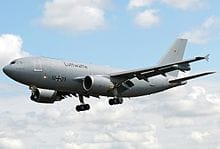The idea of building a mid-size widebody that could offer airlines the opportunity to fly long-distance routes with an aircraft that offers lower capacity than a Boeing 747 or Boeing 777 should not seem like a strange idea. The Boeing 787, the most commercially successful widebody aircraft to be produced within the past twenty years, pretty much serves exactly this purpose.
The Airbus A310, introduced in the early 1980s as a shortened, long-range derivative of the A300, achieved only limited success despite its technological advancements. Designed to offer improved fuel efficiency and flexibility for both short- and long-haul operations, the A310 found a niche among airlines seeking a mid-sized widebody aircraft. However, it struggled to gain widespread traction due to stiff competition from Boeing’s 767, which offered comparable range and capacity with greater operational efficiency.
Additionally, as the twin-engine market evolved, airlines increasingly favored newer, more fuel-efficient models like the A330, which ultimately rendered the A310 obsolete. While it enjoyed a respectable career with operators such as Lufthansa, KLM, and Singapore Airlines, its production ceased in 1998 after only 255 units were built—making it one of Airbus’s less commercially successful aircraft. Nonetheless, its innovations in cockpit automation and aerodynamics laid the groundwork for future Airbus designs, cementing its legacy as an important, albeit transitional, aircraft in the company’s history.

